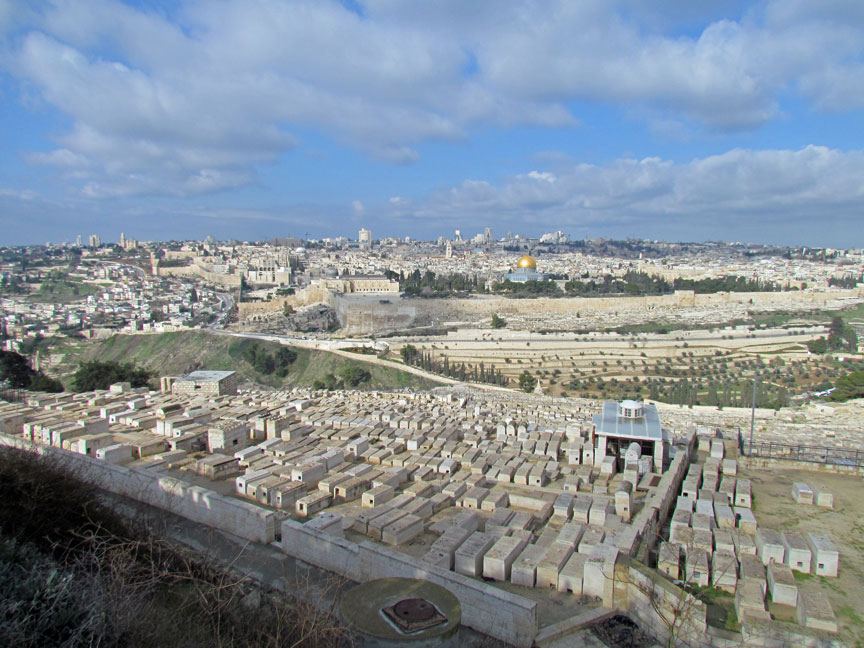

Mount of Olives

The Mount of Olives (also Mount Olivet, Hebrew: הר הזיתים, Har HaZeitim ;Arabic: جبل الزيتون, الطور, Jebel az-Zeitun) is a mountain ridge in eastern Jerusalem with three peaks running from north to south. The highest, at-Tur, rises to 818 meters (2,683 ft). It is named for the olive groves that covers its slopes. The Mount of Olives is associated with Jewish and Christian traditions. The mount has been used as a Jewish cemetery for over 3,000 years and holds approximately 150,000 graves.

Jewish graves
From Biblical times until today, Jews have been buried on the Mount of Olives. The necropolis on the southern ridge, the location of the modern village of Silwan, was the burial place of the city's most important citizens in the period of the Biblical kings. There are an estimated 150,000 graves on the Mount, including tombs traditionally associated with Zechariah and Avshalom. On the upper slope, the traditional Tomb of the Prophets Haggai, Zechariah and Malachi is situated. Notable rabbis buried on the mount include Chaim ibn Attar and others from the 15th-century to present.
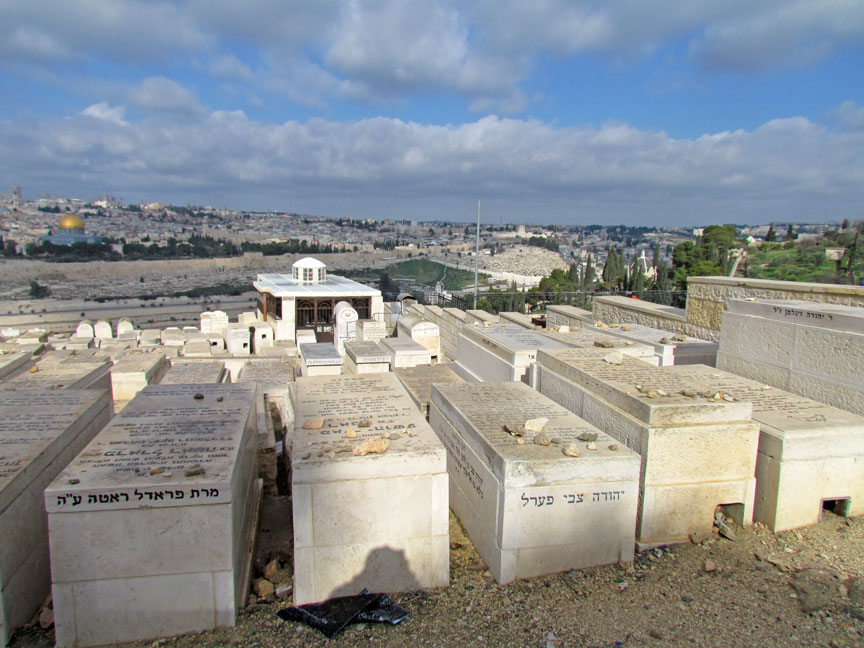
Roman soldiers from the 10th Legion camped on the Mount during the Siege of
Jerusalem in the year 70 CE. The religious ceremony marking the start of a new
month was held on the Mount of Olives in the days of the Second Temple. After
the destruction of the Temple, Jews celebrated the festival of Sukkot on the
Mount of Olives. They made pilgrimages to the Mount of Olives because it was 80
meters higher than the Temple Mount and offered a panoramic view of the Temple
site. It became a traditional place for lamenting the Temple's destruction,
especially on Tisha B'Av. In 1481, an Italian Jewish pilgrim, Rabbi Meshulam Da
Volterra, wrote: "And all the community of Jews, every year, goes up to Mount
Zion on the day of Tisha B'Av to fast and mourn, and from there they move down
along Yoshafat Valley and up to Mount of Olives. From there they see the whole
Temple (the Temple Mount) and there they weep and lament the destruction of this
House." In the mid-1850s, the villagers of Silwan were paid £100 annually by the
Jews in an effort to prevent the desecration of graves on the mount.
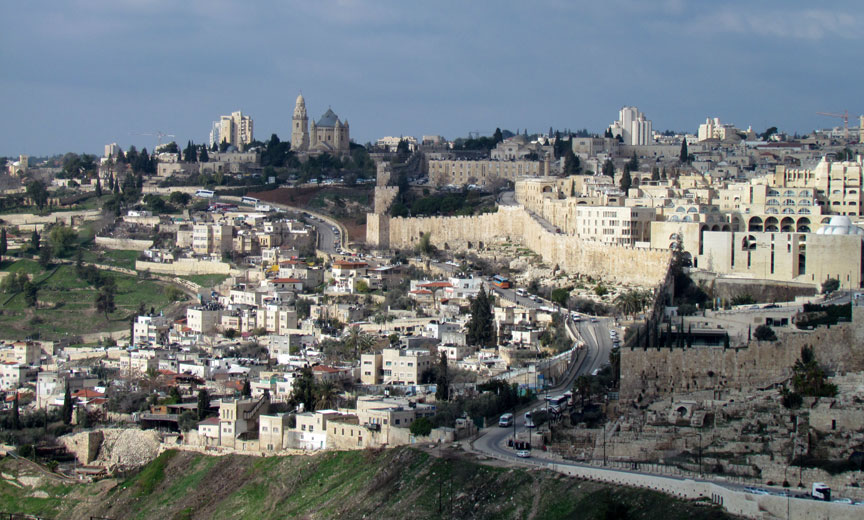
city of David
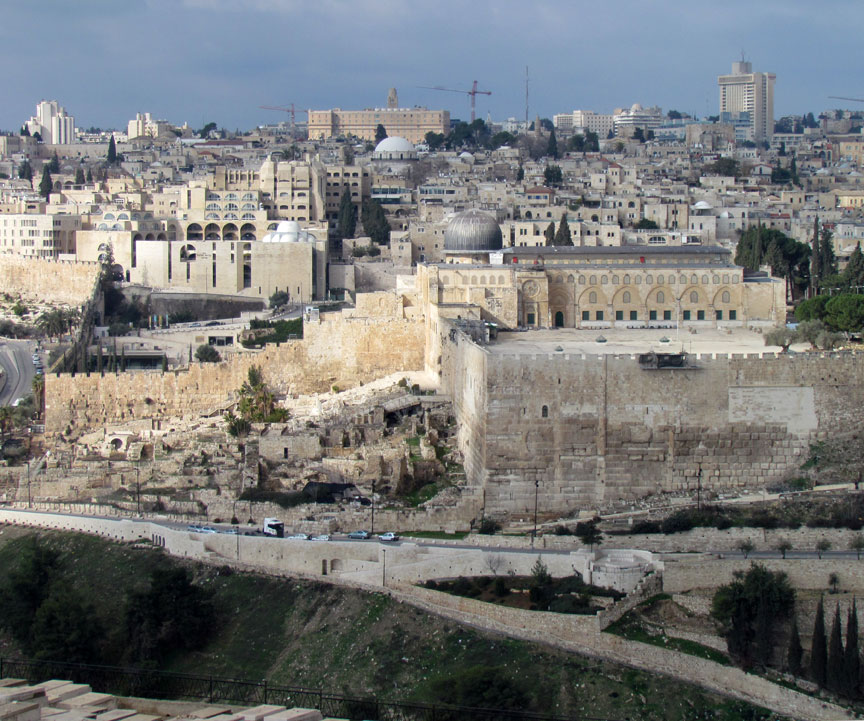
mosque on temple mount
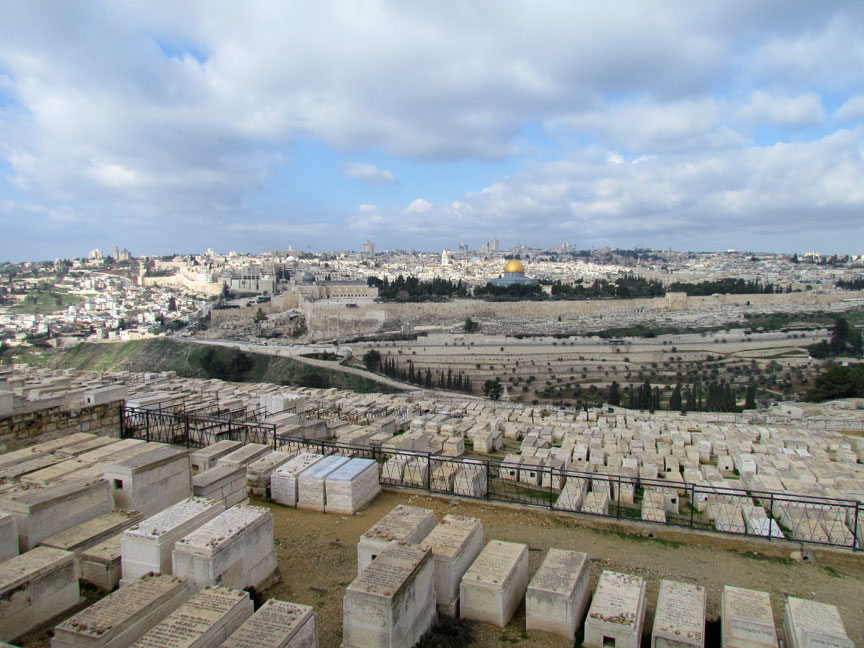
The Mount of Olives is first mentioned in connection with David's
flight from Absalom (II Samuel 15:30): "And David went up by the ascent of the
Mount of Olives, and wept as he went up." The ascent was probably east of the
City of David, near the village of Silwan. The sacred character of the mount is
alluded to in the Ezekiel (11:23): "And the glory of the Lord went up from the
midst of the city, and stood upon the mountain which is on the east side of the
city." Solomon built altars to the gods of his wives on the southern peak (I
Kings 11:7–8). During the reign of King Josiah, the mount was called the Mount
of Corruption (II Kings 23:13). An apocalyptic prophecy in the Book of Zechariah
states that Yahweh will stand on the Mount of Olives and the mountain will split
in two, with one half shifting north and one half shifting south (Zechariah
14:4).
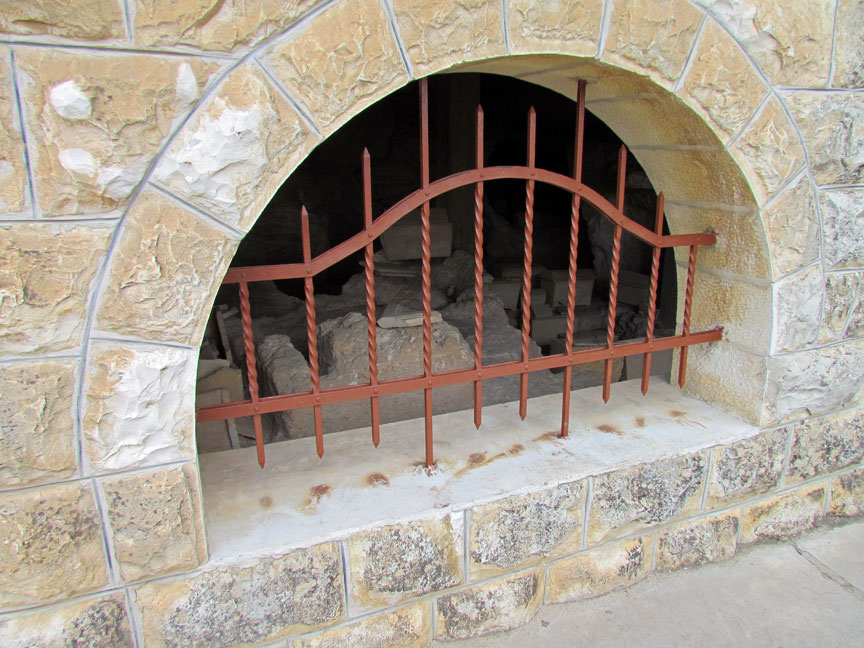
necropole
The biblical designation Har HaMashchit derives from the idol worship there, begun by King Solomon's Moabite and Ammonite wives "on the mountain which is before (east of) Jerusalem" (Kings I 11:17), just outside the limits of the holy city. This site was infamous for idol worship throughout the First Temple period, until king of Judah Josiah finally destroyed "the high places that were before Jerusalem, to the right of Har HaMashchit,..."
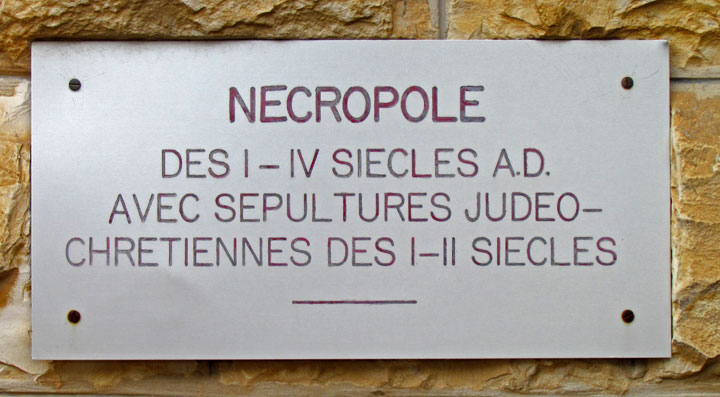
The Mount of Olives is frequently mentioned in the New Testament (Matthew
21:1;26:30, etc.) as the route from Jerusalem to Bethany and the place where
Jesus stood when he wept over Jerusalem. Jesus is said to have spent time on the
mount, teaching and prophesying to his disciples (Matthew 24–25), including the
Olivet discourse, returning after each day to rest (Luke 21:37), and also coming
there on the night of his betrayal (Matthew 26:39). At the foot of the Mount of
Olives lies the Garden of Gethsemane. The New Testament, tells how Jesus and his
friends sang together – "When they had sung the hymn, they went out to the Mount
of Olives" Gospel of Matthew 26:30. Jesus ascended to heaven from the Mt of
Olives as recorded in the book of Acts 1:9–12.
Text from Wikipedia
